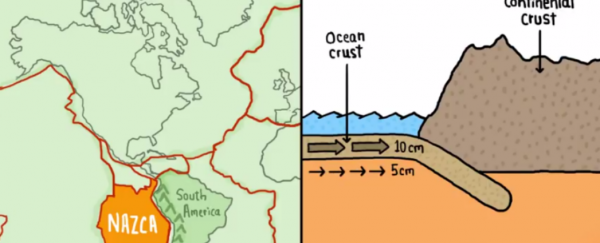Only in the past 50 years have geologists settled on the idea that the surface of Earth is split into several fragments that periodically move away from, and into, each other, over the course of many hundreds and thousands of years. The movement of these fragments, called tectonic plates, is now being measured millimetre by millimetre from space, so we know how they're moving, but do we know why?
According to the latest episode of MinuteEarth, the most common theory as to why tectonic plates move the way they do is that they're carried along by the slow-flowing currents of the upper mantle just below the crust, like inflatable armchairs down a gently flowing stream. Converging currents push plates together, while diverging currents will pull them apart, the theory goes.
"This is mostly true," says MinuteEarth. "Hot mantle rock rises from the core and moves along under the crust, until it grows cool and heavy and sinks back down again. But the plates aren't just passively riding these conveyer belt-like currents around like a bunch of suitcases at the baggage claim." Sooo, inflatable armchairs are out then?
We know the conveyer belt/floating armchair theory isn't true because some tectonic plates are moving faster than the currents beneath them. For example, one of the fastest moving plates is the Nazca Plate, just off the west coast of South America. It's moving eastward at about 10 cm per year, which, when you think about it, is insanely fast. The mantle underneath it is cruising at a much more leisurely 5 cm per year.
Turns out, some of Earth's plates are actually pulling themselves along, in conjunction with the pull they get from the currents below. I cannot stress how adorable this looks in the video above. Trust MinuteEarth to make tectonic plates look like something I want to take for walkies in the park.
But it's more than just a cute idea; when plates crash into each other, one of them will start moving underneath the other, and the further it sinks into the mantle below, the more it will be pulled down, like a silver chain running off the edge of your bedside table. "The bigger the portion of sunken plate becomes, the harder it pulls, and the faster the remaining plate behind it moves," says MinuteEarth.
Want to see this in action? Watch the video above to find out how you can spot this phenomenon using Google Earth.
Source: MinuteEarth
